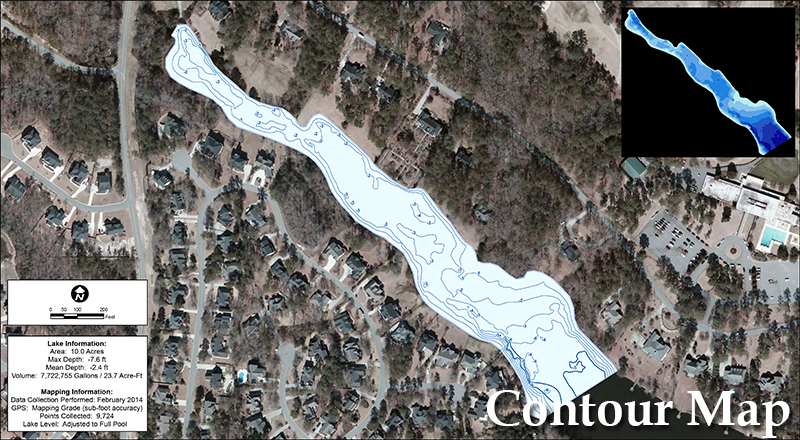Planning For Your Pond’s Future
July 16th, 2009
 Many homeowners, association managers, and even pond management professionals spend time and resources each year maintaining their storm water retention ponds and dealing with the immediate problems such as algae, nuisance aquatic weeds, poor water quality, etc. It seems that far fewer people allocate time or resources to the future planning and budgeting necessary to deal with potentially even more significant issues that might arise with these ponds.
Many homeowners, association managers, and even pond management professionals spend time and resources each year maintaining their storm water retention ponds and dealing with the immediate problems such as algae, nuisance aquatic weeds, poor water quality, etc. It seems that far fewer people allocate time or resources to the future planning and budgeting necessary to deal with potentially even more significant issues that might arise with these ponds.
One of the “scariest” and most costly expenses that may ever be faced by a homeowner association is that of dredging. Typically, pond owners are told that they should expect to dredge a pond every 20 years. This rule of thumb is OK, but often not accurate enough to be counted on for budgeting purposes.
Have you started to budget for the cost of dredging? Do you have any idea what it will cost you to dredge when that fateful day arrives? Will your pond need to be dredged in 20 years? Maybe it will only be 10 years or maybe you will do better than average and your pond won’t need to be dredged for 30 years.
The point is, unless you do some research, evaluate the condition of your pond, and start the planning, you will never know the answer to any of these questions.
The good news for you all pond owners is there are some simple steps that can be undertaken to begin the planning process.
The most important fist step is to perform a bathymetric study of your pond. This is a process by which we use GPS technology combined with depth scanning technology to map the surface of the pond and associated depths of the pond to determine the current bottom contour and depth. This will give you the actual wet storage capacity of your pond at the current time.
Once you have obtained this information, you can then compare this to the original “as built” plans and see how much sediment and debris has accumulated in the pond since original construction. After making this comparison, you can figure what the average yearly sedimentation rate for the pond has been since it was first constructed, and project into the future how much longer you will have until the pond will need to be dredged.
This information is also crucial to your budgeting process. Once you can quantify the amount of sediment that is in your pond to date and how much is anticipated to accumulate in your pond in the future, you will then be able to obtain exact quotations from qualified dredging contractors for removing this sediment. This will take all of the guess work out of your budgeting process, and help to insure that you are prepared for the future.
Kevin Tucker is the president of SOLitude Lake Management. Since 1998, SOLitude Lake Management has been committed to providing full service lake and pond management services that improve water quality, preserve natural resources, and reduce our environmental footprint. Services are available throughout the Eastern United States. Fisheries management consulting and aquatic products are available nationwide. Learn more about SOLitude Lake Management and purchase products at www.solitudelakemanagement.com.
Contact the experts at 888-480-5253 for all of your lake, pond and fisheries management needs.










